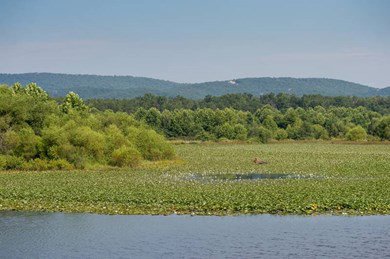On January 23, 2020, U.S. Environmental Protection Agency (EPA) and the U.S. Army Corps of Engineers (USACE) finalized a revised definition of “Waters of the United States” (WOTUS). This new regulatory definition, which will go into effect 60 days after being published in the federal register, will update the extent of streams, wetlands, and other water bodies that are protected under the federal Clean Water Act and associated 404 and 401 permitting programs. USEPA and USACE have stated that the rule streamlines the definition of WOTUS by including four simple categories of jurisdictional waters and provides clear exclusions for many features that have not been traditionally regulated. Two of the most important changes: ephemeral streams and certain wetlands (specifically those that are not adjacent to other jurisdictional waters) will no longer be covered under the Clean Water Act. Due to the reduction in federal protection afforded to these aquatic resources, numerous environmental groups have stated their intent to file lawsuits in federal court to block implementation of the new rule.

The rule will...
- Reduce the extent of wetlands regulated by the federal government. To be considered a WOTUS, wetlands must now be “adjacent” to other jurisdictional waters (ex. intermittent or perennial streams that ultimately flow to a traditional navigable water like the Cuyahoga River). “Adjacent” is generally described in the new rule as a wetland having a meaningful connection to a jurisdictional water where there is regular movement of surface water between the wetland and the other water body. Historically, wetlands that drained to ephemeral streams, or wetlands within a certain distance of a stream or floodplain, were often considered jurisdictional on a case by case basis or by default. Note: Wetlands that are determined to be outside the jurisdiction of the federal government will still be protected under the State of Ohio’s isolated wetlands law and will still require a permit to be impacted by development activities. Under Ohio law, isolated wetland is defined as a wetland that is not subject to regulation under the Federal Water Pollution Control Act (i.e. Clean Water Act).
- Reduce the extent of streams regulated by the federal government: Past iterations of the WOTUS definition explicitly protected all streams or required resource-specific analyses to determine if a stream had a significant nexus to a downstream traditional navigable water. In the revised definition, ephemeral streams that flow only after storm events or snowmelt are no longer protected under the Clean Water Act.
- Potentially change permitting and development strategies: Due to this shift in federal jurisdiction, projects that are currently moving through initial due-diligence may benefit from a re-evaluation of their permitting strategies. Use of isolated wetland permits in Ohio will likely become more prevalent due to revised WOTUS rule effectively “creating” a greater extent of these resources. The isolated wetland permit program provides applicants with more flexibility compared to USACE’s Nationwide Permits or Individual Permits (e.g. there is no state-level requirements for historical/archaeological investigations).
The rule will not change...
- How wetlands are identified or delineated. Delineations will still be required to identify aquatic resources on a project site, including areas that meet the three criteria needed to be considered a wetland (hydrology, hydric soils, and hydrophytic vegetation). The delineation of wetlands and streams will continue to follow applicable USACE guidance documents (e.g. 1987 manual, regional supplements, etc.), none of which have been affected by this rule. Aquatic resource boundaries and their jurisdictional status will still be verified by USACE through its jurisdictional determination process.
- The 404/401 and isolated wetland permitting processes. Projects (within Ohio) that propose to impact a WOTUS or an isolated wetland must still obtain authorization through existing USACE and Ohio EPA permitting programs. Compensatory mitigation to offset impacts to these resources may still be required by the agencies, depending on the quantity of impacts proposed. This rule does not affect these permitting programs.
Some Unknowns:
- When will lawsuits challenging the new WOTUS rule be filed, and will they result in an injunction that stays implementation of the rule? The Obama administration’s version of the WOTUS rule was swiftly blocked by federal courts. It appears that the Trump administration’s version may suffer from a similar fate. Numerous environmental groups have stated that they intend to file lawsuits challenging the WOTUS rule, which could halt or slow the implementation of this regulatory change.
- How will the State of Ohio and Ohio EPA treat ephemeral streams? Although ephemeral streams are now explicitly excluded from the definition of WOTUS, Waters of the State of Ohio includes all streams within its definition. This state law has not changed. Currently, the State of Ohio lacks a clear permitting mechanism to review impacts proposed to ephemeral streams, so it is unknown at this time how Ohio EPA will evaluate such projects.
Davey Resource Group is closely following this important regulatory change and will provide additional updates and insights as more information becomes available.



